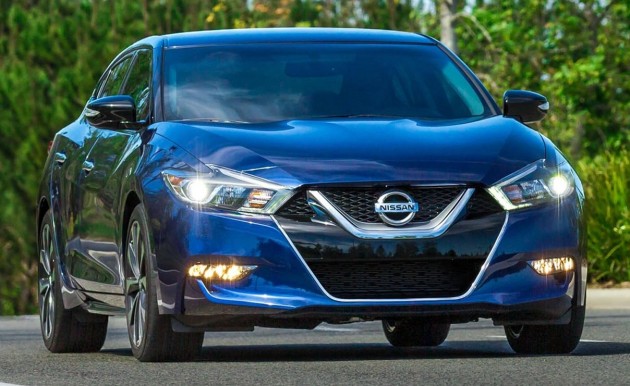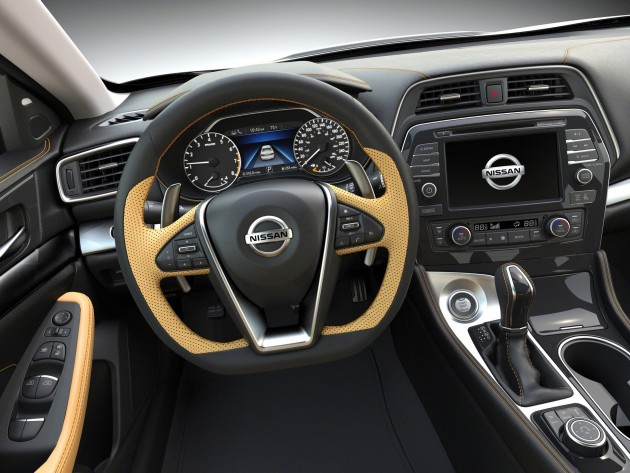
The 2016 Nissan Maxima has been unveiled at the ongoing 2015 New York International Auto Show (2015 NYIAS). Nissan’s eight-generation “four-door sports car” will now be offered in five trim levels when it goes on sale in showrooms across the US at the start of the second quarter of this year.
Staying true to its sporting nature, the new Maxima features the latest iteration of the marque’s VQ engine – the 3.5 litre V6 pumps out a total of 300 hp and 353 Nm of torque. The mill is mated to Nissan’s Xtronic CVT, supposedly “performance-oriented” for this application. Fuel consumption is rated at 9.4 km/l and 12.8 km/l for both the city and highway cycles, respectively.
In terms of it aesthetics, the 2016 Nissan Maxima features a front end that’s bound to intimidate a few road users from time to time. The bold, V-Motion front fascia comprises of a stylised front grille which is flanked by “boomerang” LED daytime runnings lights – themselves embedded into the head light assembly.

Elsewhere, two-toned, twin five-spoke 18-inch wheels and a ‘floating roof’ design provides the 2016 Nissan Maxima some visual drama on the side. At the rear, large, angular tail lamps assemblies help add to the car’s visual width while twin exhaust outlets at each end round off the stylistic highlights.
A driver-focused interior layout comes courtesy of the angled centre stack while an eight-inch touchscreen interface featuring the marque’s NissanConnect SM with navigation is present. Connectivity features such as SiriusXM Satellite Radio, SiriusXM Travel Link and Online Search with Google are included. Within the instrument cluster sits a seven-inch Advanced Drive Assist Display interface that is apart of the aforementioned NissanConnect platform.
As for safety kit count, the 2016 Nissan Maxima offers, depending on trim level selected, Predictive Forward Collision Warning, Intelligent Cruise Control, Forward Emergency Braking, Rear Cross Traffic Alert, Blind Spot Warning and Driver Attention Alert. The latter adapts to the initial steering inputs of the driver and issues an alert when it detects a disruption in the established driving style.